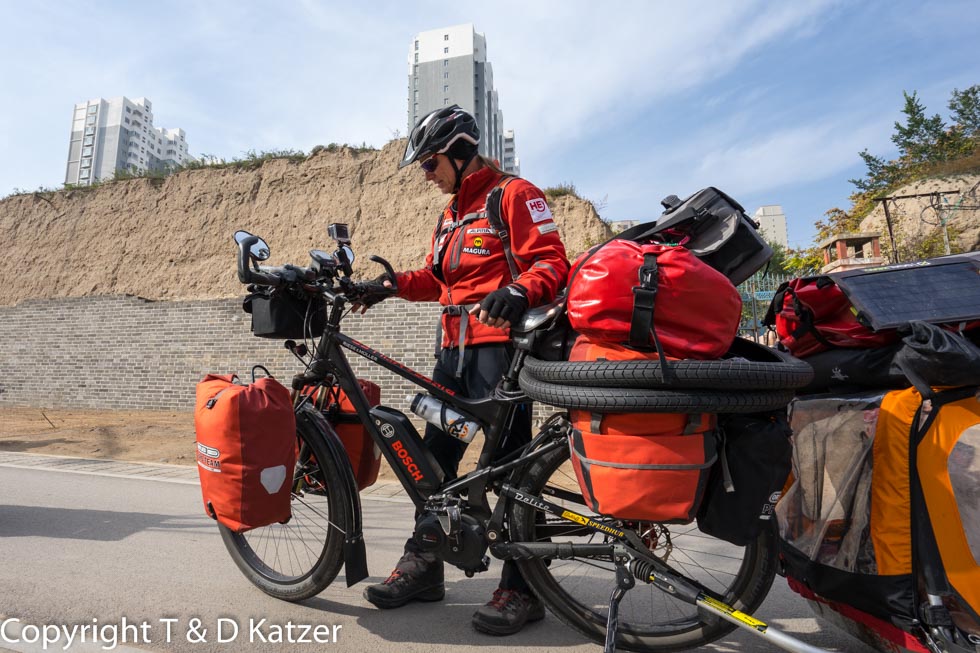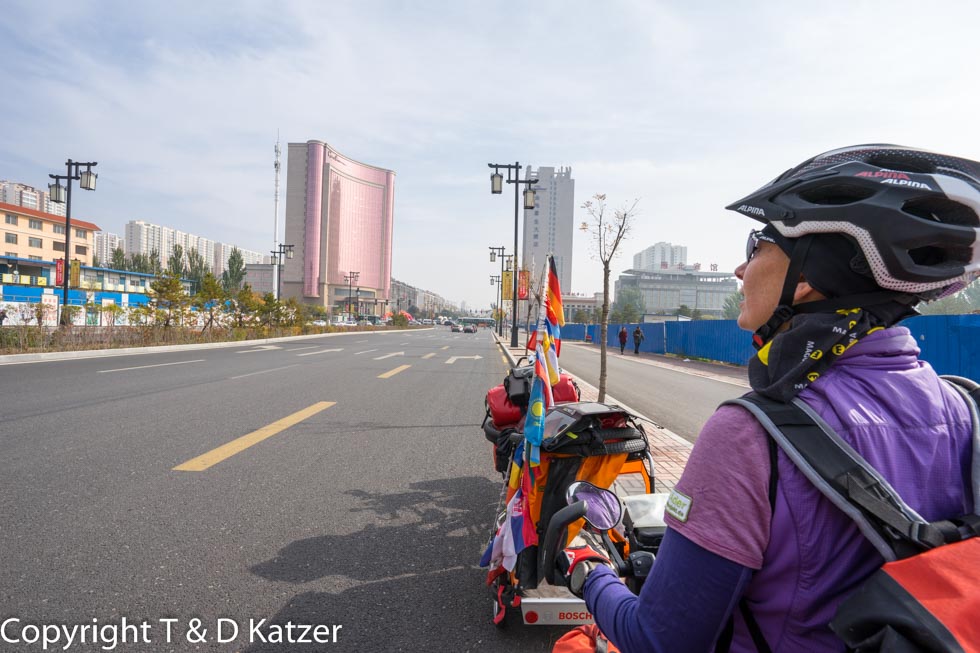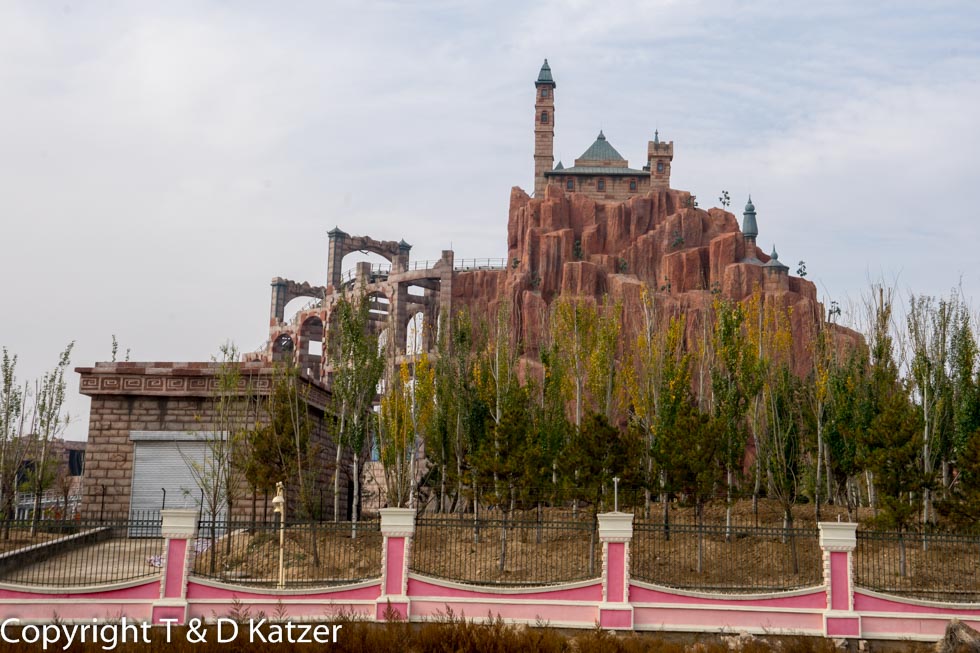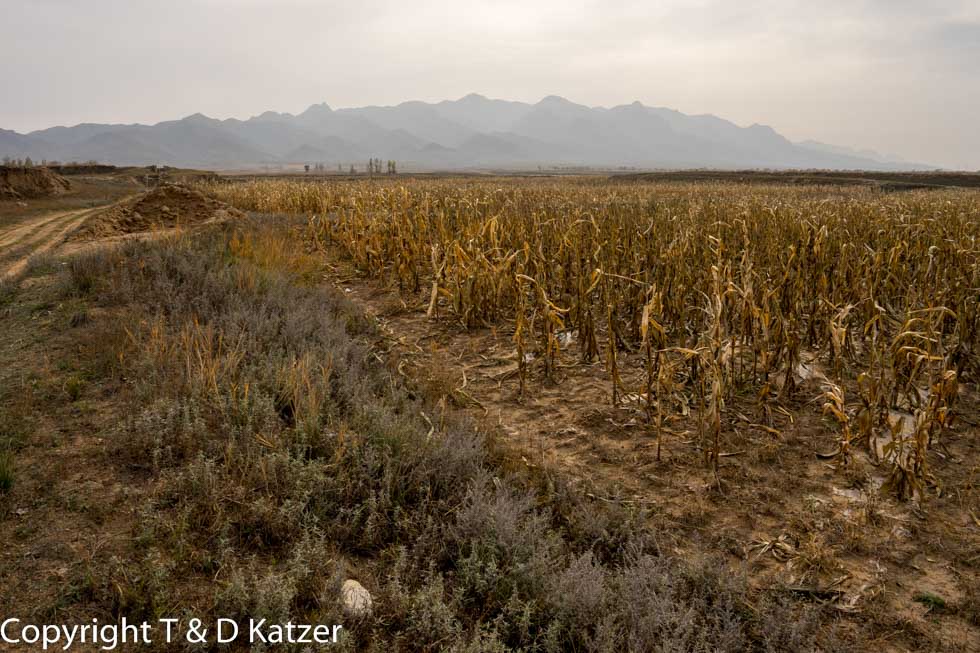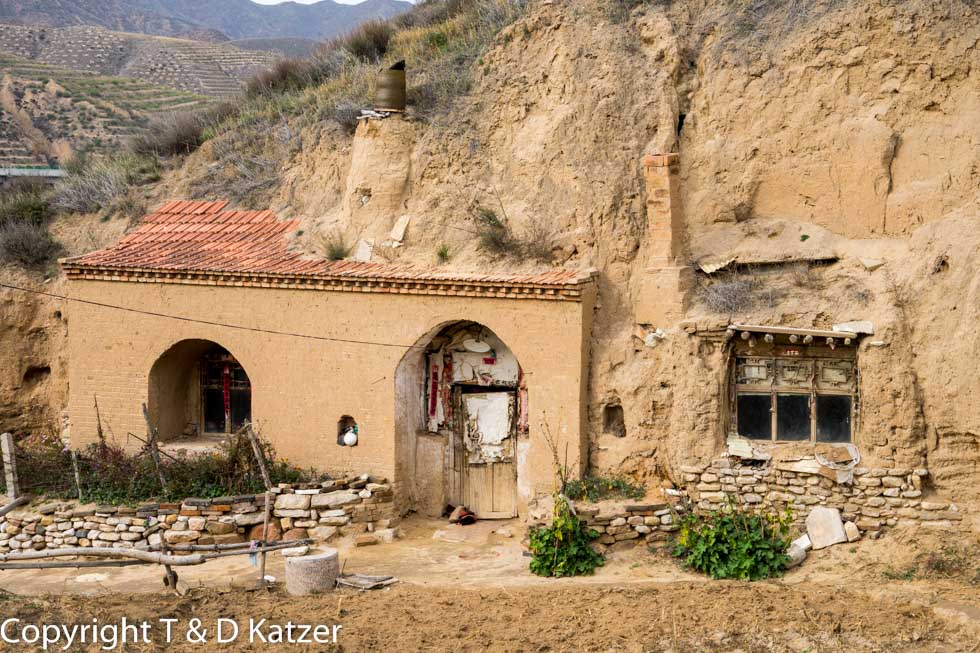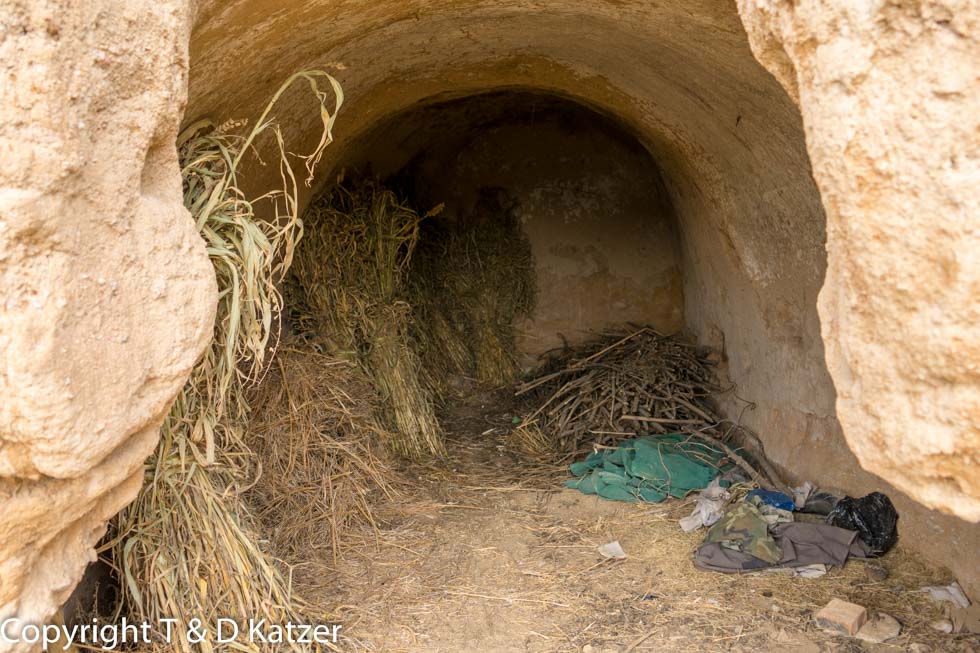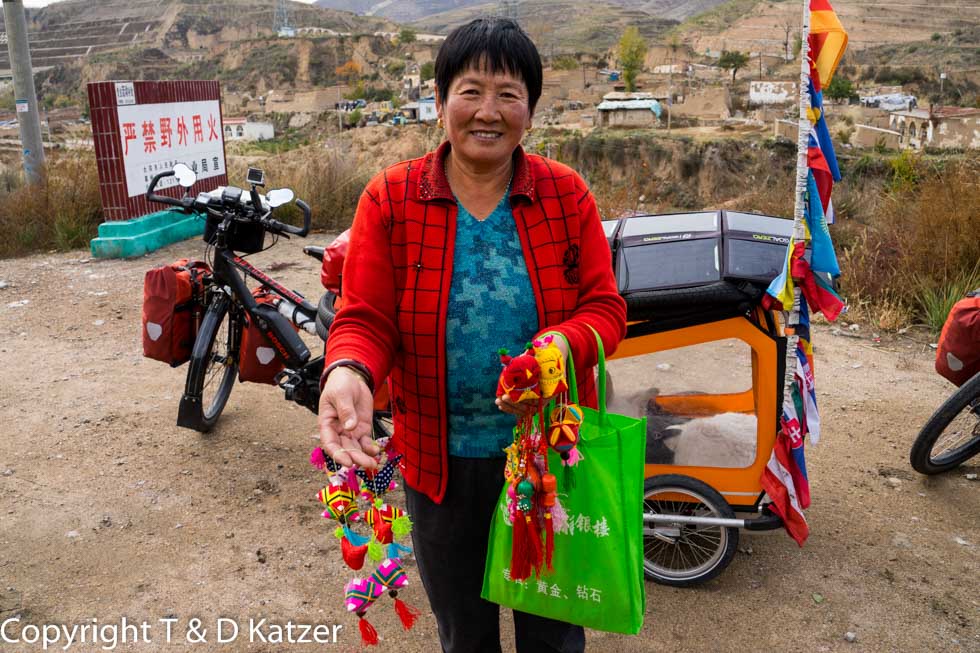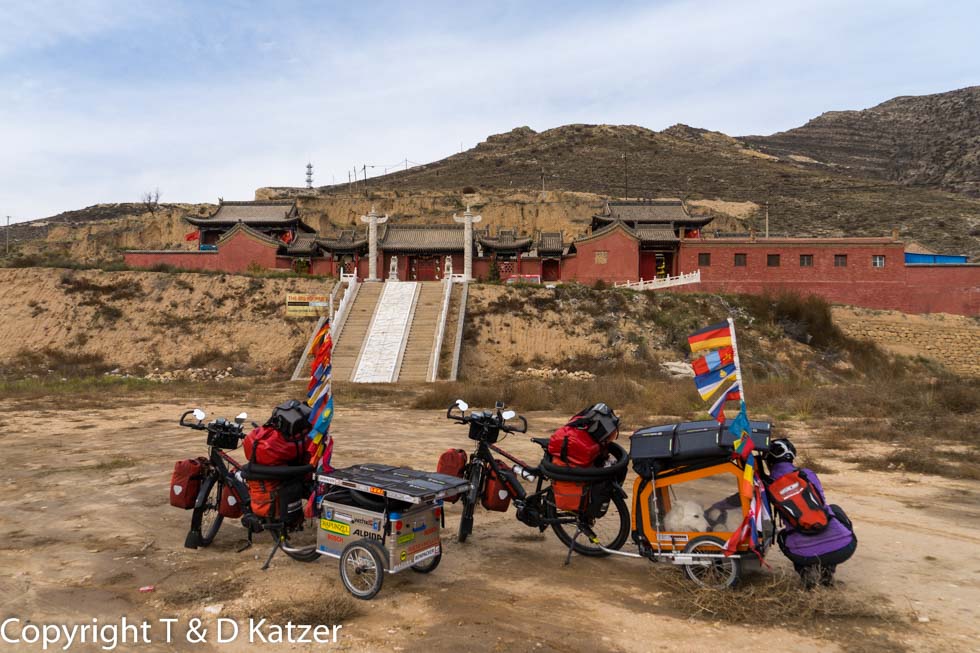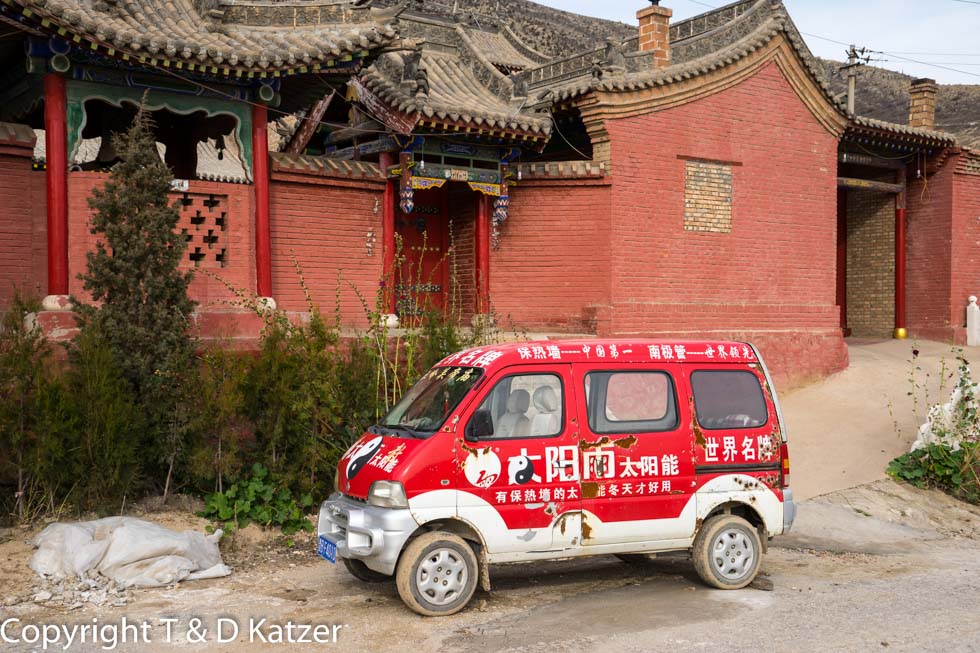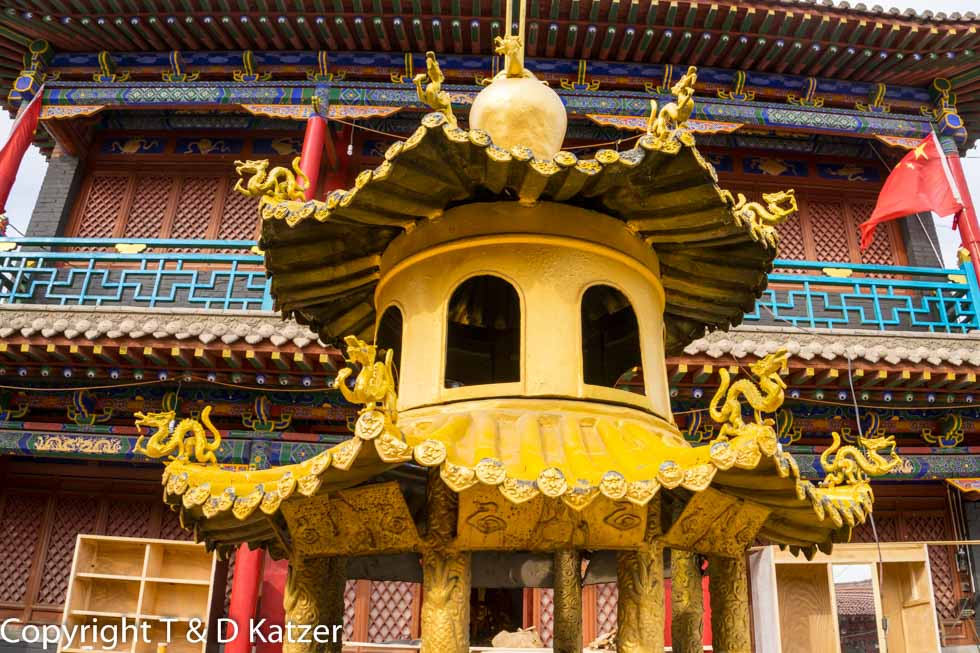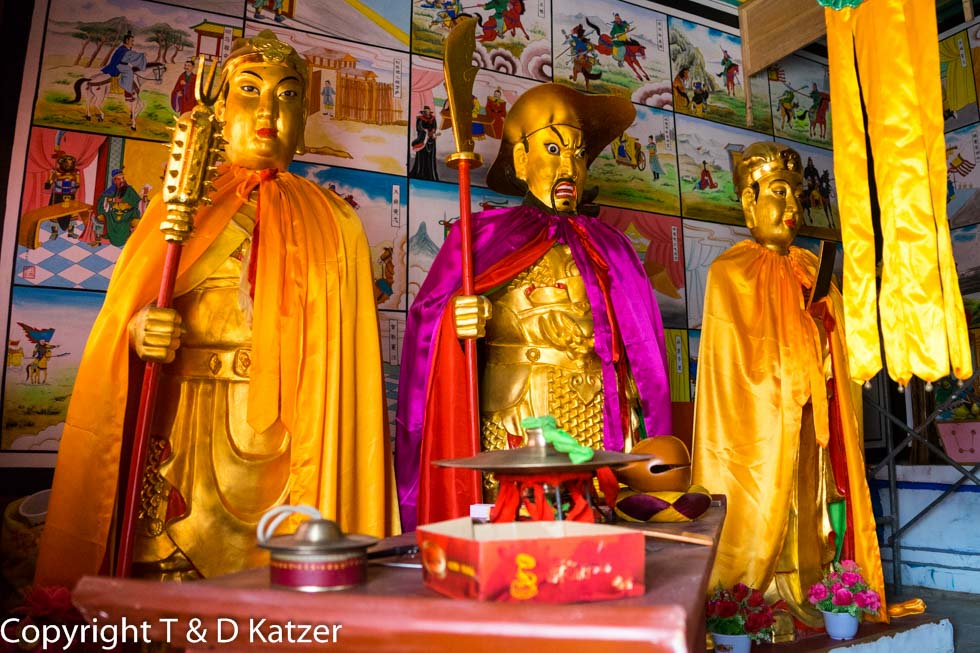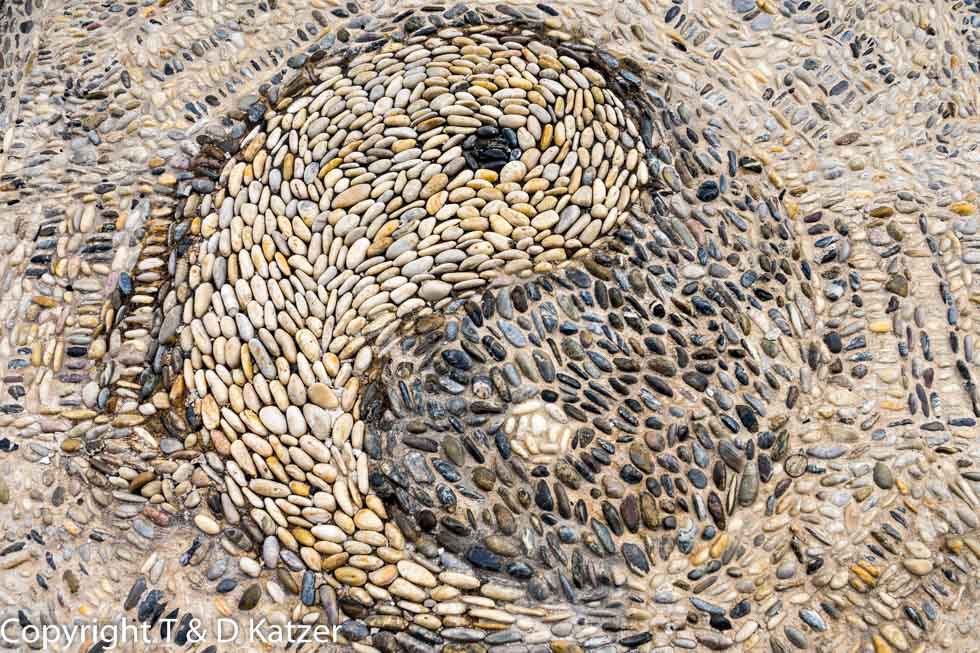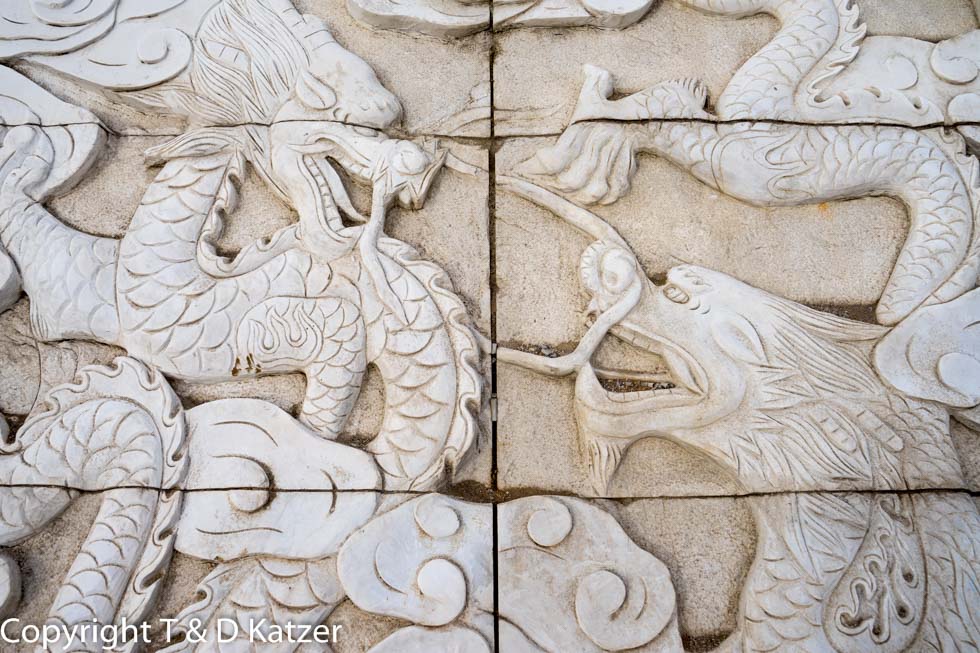
Hanging monasteries and hygiene
N 39°39'47.0'' E 113°42'28.0''
Date:
25.10.2015 to 26.10.2015
Day: 119 – 120
Country:
China
Province:
Shanxi
Location:
Dongfangsheng
Latitude N:
39°39’47.0”
Longitude E:
113°42’28.0”
Maximum height:
1.288 m
Total altitude meters:
5.900 m
Sunrise:
06:44 am to 06:45 am
Sunset:
5:34 pm to 5:33 pm
Temperature day max:
7 °C
Total plate tires:
8
Plate front tire:
2
Flat rear tire:
5
Plate trailer tire:
1
(Photos of the diary entry can be found at the end of the text).
8:00 am. The weather has deteriorated. It is quite cold with a maximum of 7 °C. The storm-like wind whistling into the city from Heng Shang gives us an idea of what it must be like here in winter. The street where our simple accommodation is located is almost deserted. Dust and dirt swirl through the air. Hoping that it will clear up a bit in the afternoon, we stay in the room and work on our notes. At 13:00, the gusty wind seems to have picked up further. As we have made a detour of 70 km, partly because of the famous Hanging Monasteries, and don’t know whether the weather will continue to deteriorate, we set off. “You can walk. It’s not far,” said our host, which is why we set off for the Golden Dragon Pass. The pass road is very busy with trucks, so that the exhaust fumes from the countless trucks make us cough. The extreme wind is so strong that we have to bend our bodies forward to avoid being blown over. “It’s a good thing we left our bikes in our hosts’ bedroom,” says Tanja. Suddenly one of the few cars stops next to us. “Do you want to go to Xuankong Si?” the passenger asks us in good English. “Shide”, (yes) we answer. “Come on, get in. We’ll drive you there,” she invites us. We quickly clear a few items from the back seat and escape the nasty wind. “We come from Beijing to see the sacred mountain and the monastery. It’s a venerable place,” she says. “Yes, that’s why we rode here on our bikes,” I reply. “We want them to speak well of our country. That’s the reason why we don’t want them walking out there on that terrible road.” When we arrive at the huge parking lot below the Hanging Monasteries, she explains where we can buy the tickets. “And take a cab on the way back,” she recommends, laughing and driving off with her husband.
Even from here, the view of the Hanging Monasteries, built in the 6th century and clinging to the steep rock like swallows’ nests some 30 meters above the ground, is breathtaking. We buy two tickets, which only cost 25 yuan per person instead of 125 yuan. “That’s the advantage of the off-season. The Chinese are really fair,” I say happily. Although the parking lot is the size of several soccer pitches, we are the only visitors on the entire site. It’s probably because of the bad weather. The gusts swoop down on us like vultures from the peaks and take our breath away. “I should have put on my thick jacket,” I shiver from the cold, trying to drown out the howling wind. It’s a wonder how these wooden buildings can hold up up there in the rock, I think to myself and take a few photos despite the poor light. We are following the winding, stone-paved path when we come across two administrative staff who are shivering all over despite their fat down jackets. “Bu! (No) They’re not allowed in here,” we understand. “What? But that’s the way to the monastery up there,” I say. “Being restored,” says the lady in poor English. “Unbelievable, they charge 25 yuan (€3.66) entry and now we’re only allowed to walk around the grounds. I would have loved to see all the Buddha statues that are supposed to be inside,” I complain. “But it also looks impressive from down here,” Tanja replies. “You can find something good in everything.” “What’s the point of getting upset about it. Who knows what it’s good for. Maybe the squalls would have swept one of us down there?” “Well, that’s true again. With that wind, you’d have to rope yourself up to get safely across the narrow wooden walkways and bridges.” We stand there and look up at the monastery, which is suspended in the rock face above us and consists of 40 small rooms and pavilions. The brave master builder called Zhang conjured them up there. At least that’s how it seems to me. It took a great deal of ingenuity and inventiveness to attach such buildings, making intelligent use of the natural hollows and protrusions along the contours of the rough rock face, so that they are still hanging there 1,500 years later. To prevent them from simply falling down, Zhang had them supported with wooden stilts anchored in the rock. The question of how they brought all the material up there is answered in the tradition: Master Zhang had the wooden parts prefabricated down here in the gorge, as if in a modular system, and then had them hauled up to the summit via an easier access. The workers were then instructed to abseil down from the dizzying height with the material. Ropes were tied to their hips and feet. Certainly an extremely strenuous and dangerous undertaking.
Although we were denied access to the inside of the monastery today, we did not regret visiting this unique place, because our tour through China is not just about riding an e-bike, but about getting to know this fascinating country with its ancient culture and its inhabitants in an unusual way.
In the evening, we go to a restaurant diagonally opposite our accommodation. Like most simple Chinese restaurants, it is very uncomfortable. Apart from a few tables and chairs, there are hardly any furnishings. The walls are bare and white, the lighting is often just an ugly energy-saving bulb. Because the Chinese throw a lot of food on the floor during the meal, it sticks a little. It is always swept after the meal but not mopped. We are the only guests in the unheated room, which resembles the waiting room of a dilapidated provincial railway station in a German village 50 years ago. Next to us is a kind of terrarium in which a large number of crabs cavort. They nibble on wilted, moldy lettuce leaves. A small turtle also ekes out a miserable existence there until it ends up in the wok for one of the few guests in the company of some of its fellow crabs. A few dishes, chicken, pig and chicken feet, a poor fish, salad, beans, tofu etc. are displayed on plates in a functional refrigerator. Basically everything is packed under plastic wrap. The shitty plastic has contaminated the whole of China to an extent that can hardly be described. Everything is wrapped in plastic. Millions, or rather billions. Almost every food and every object. Even nuts like bananas. Simply absolutely everything. I have no idea how our Mother Earth is supposed to cope with this or whether humanity will survive this abnormal global plastic madness. Apart from that, people seem to give little or no thought to the danger of phthalate-based plasticizers, which are also used in food packaging and enter our bloodstream through simple contact or contaminated food, among other things. In the EU, these chemical additives are classified as toxic to reproduction and are suspected of causing diabetes and having other health effects on us humans.
As plastic takes centuries to fully decompose, it can be found throughout our food chain. There is even plastic in fish because, according to some researchers, between 5 and 13 million tons of plastic end up in the world’s oceans every year and the poor vertebrates have no other chance than to eat it every day. So it is served to us again in the form of fish or other foods on our plates. The plastic craze has even gone so far that almost every restaurant wraps its dishes in plastic. It has become a real industry to wrap porcelain tableware in the transparent stuff and deliver it to every restaurant, no matter how small. After use, it is thrown into plastic tubs as dirty as it is and collected again by a service. It will probably then be washed and repackaged in plastic. But we haven’t found out exactly yet. The madness is that every customer has to pay a few yuan for the obviously sterilely packaged cover, and accepts it as such. A strange fad, as many restaurants are anything but clean. Hygiene often leaves a lot to be desired. The other day a waitress was coughing incessantly while serving. She was visibly unfamiliar with holding her hand in front of her mouth. She smiled at me, coughed directly onto the food and put it on the table. It was good that we were able to unpack our plastic-wrapped sterile cover. So at least there was no additional strain of bacteria on the plates and cups. The other day we were in a restaurant where the chef kept watching us, kept taking photos of us and in the meantime unabashedly picked his nose. Sometimes they also enjoy themselves vigorously, and anything that lands on their hands is simply wiped off on their pants. Of course, I don’t want to give the impression that the Chinese are dirty, but from our observations so far, I have the impression that the importance of hygiene has not really gotten around yet. But back to our little restaurant. The shy waitress, the daughter of the cook, proudly points to a few dishes wrapped in plastic. “But the beans look moldy,” Tanja notes. “Then we’ll just order something else,” I say. Because Tanja eats a mostly vegetarian diet and I only eat poultry on a few occasions, we give the crabs and the turtle in the glass box next to us a few more hours or days of life. Although I’m not sure whether they would even want to under these conditions. “Ging bu yao fang weijing.” (No flavor enhancers, please) we say and point to the important sentence in our phrasebook to be sure. Unfortunately, the chefs in this country put glutamate in almost every meal, which always makes my stomach upset and Tanja’s face puffy. Mei you”, (not having, loosely translated, we leave out) the cooks always reply full of understanding and usually stick to not sprinkling the white powder into the wok.
It doesn’t take long before we are served tofu in a kind of leek vegetable, tomatoes and eggs in a spicy sauce and, who would have thought it, beans. “Beans?” asks Tanja, pointing to the plate. “We cut off the bad ends,” explains the daughter of the house with a smile. As almost always, the food tastes excellent. The beans do not have a moldy taste either. “The Chinese can just cook,” I say, rubbing my stomach with satisfaction…
The live coverage is supported by the companies Gesat GmbH: www.gesat.com and roda computer GmbH www.roda-computer.com The satellite telephone Explorer 300 from Gesat and the rugged notebook Pegasus RP9 from Roda are the pillars of the transmission.

